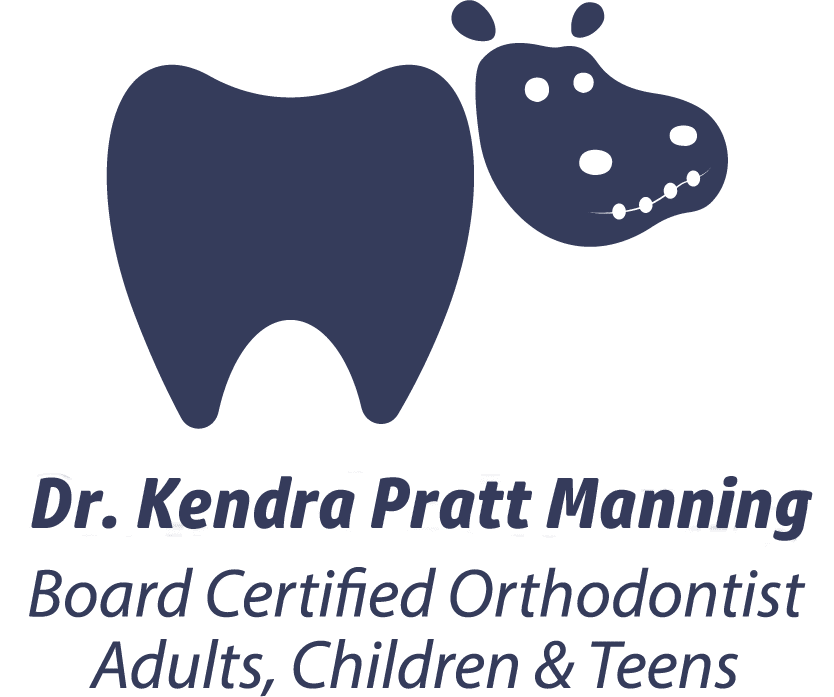
Traditional Orthodontic Braces
Traditional metal braces are one of the most common, tried-and-true methods of straightening teeth. Parents of our patients often comment that they had this type of orthodontic braces when they were younger.
If you have a crooked, gapped, or uneven smile, traditional braces are a great way to give you the straight smile of your dreams. They can also be used to correct under- and overbites as well as certain jaw issues.
While their parents probably wore all-silver braces with plain metal bands, many of our current pre-teen and teenage patients in The Woodlands can now coordinate the color of their braces with holidays, their school, and their favorite colors, thanks to different colored elastic bands. Metal braces offer the option to do this in a fashionable way, and for young kids, choosing their colors can make the process of wearing braces more enjoyable.
You can also feel good knowing that the brackets we use are made in the USA!
Benefits of Traditional Braces
- They’re suitable for patients of any age.
- They can help tackle more complex alignment issues that other systems can’t handle.
- They’re much more comfortable these days than in decades past due to advancements in technology.
- They can usually close gaps and move teeth more quickly than some systems, such as Invisalign.
Things to Know About Traditional Braces
With traditional braces, it’s important that you stay on top of your oral hygiene routine. While it might be more difficult to reach some places in your mouth, you shouldn’t use that as an excuse to cut back on how you brush and floss. Neglecting your oral health can quickly result in periodontal disease, cavities, or uneven tooth staining when you have metal braces.
You should also avoid foods that might harm your metal braces, including anything chewy, sticky, or hard. These foods can pull your brackets off your teeth or cause other damage. You might also need to change the way you bite into foods, as doing something as simple as taking a normal bite of an apple may damage your brackets.
If you’d like to talk to Dr. Pratt Manning about traditional braces, call our The Woodlands, TX office near Magnolia, Spring, Conroe and Tomball, TX at 281-367-0050 (Woodlands) or 936-596-1200 (Montgomery) to make an appointment today!
Traditional Braces FAQs
Braces can help correct your bite, crowded teeth, and crooked teeth. To get the most out of your orthodontic appliances, you should carefully follow your orthodontist’s instructions. You can also read through the most asked questions to get a better understanding of the entire process.
Traditional braces are used to align your teeth. This is done with color ties (O rings) and archwires. You can use traditional braces to fix crooked teeth, gaps, and other problems.
How fast we fix your teeth depends on how severe the crowding is and how much bite correction you need. In addition, speed is also determined by how much the patient cooperates with wearing elastic bands.
How long you wear braces is determined by how your teeth look before we begin your treatment. If your teeth have limited crowding and an ideal bite, then you won’t have to wear braces for a long time. Likewise, someone who has crowded teeth, a large overbite, or a problem cooperating with elastics will need to wear braces for a longer time period.
This depends entirely on the problem and your current age. In general, we like to see kids for underbites and overbites before they turn 8 years old.
Because of this, we generally recommend patients come in for an orthodontic visit before they turn 8. This gives us a chance to rule out any problems and plan for future treatments. After we conduct this initial visit, most patients don’t start their treatment until they are 10 to 13 years old.
Braces can sometimes be painful, but you can typically control the pain with over-the-counter medications, like Advil and Tylenol.
When you have braces, you should angle your toothbrush at 45°. Then, you should brush under the archwire. Focus on cleaning between your gums (gingiva) and brackets.
The cost of braces can vary based on the amount of work we have to do and how much your insurance will cover. During our initial consultation, we can give you a cost estimate.
Medical insurance won’t cover the cost of braces, but some dental plans will pay a monthly amount during your treatment. During your complimentary initial exam, we can review how much your dental insurance will pay toward your treatment.
For most patients, follow-up appointments happen every four to eight weeks.
When it is time to take your braces off, we will fit your mouth for retainers. You will wear your retainer at night to keep your arch form and tooth alignment in place. Depending on the situation, you can use a bonded lower retainer or a removable lower retainer.
Our traditional braces are made in America by American Orthodontics. We also offer Damon Metal and Damon Clear Self-Ligating Braces.
When you have braces, you should avoid hard, sticky, crunchy, or chewy foods. You should also avoid any food you have to bite into, like apples, carrots, and corn on the cob, unless you can cut them into pieces.
You should be able to play any instrument or sport with braces. You may just need to wear a mouthguard during contact sports or make slight adjustments when playing a band instrument.
To schedule an appointment, you simply have to call Dr. Pratt Manning’s office. Your initial orthodontic consultation is free. We will look at the type of treatment your child needs as well as how much of the cost your insurance will cover.
To avoid cavities, you shouldn’t drink soda, energy drinks, fruit drinks, or other sugary beverages. Acidic liquids and staining liquids should also be avoided.
If you want a more beautiful smile, we can help! Dr. Pratt Manning offers a free initial orthodontic consultation for new clients. To learn how traditional braces can correct your teeth, call us to schedule an appointment with Dr. Pratt Manning.

